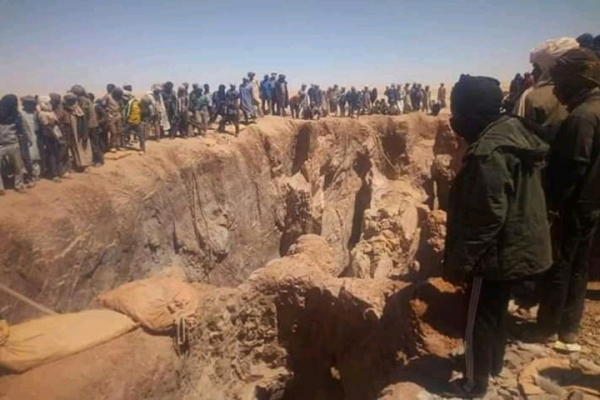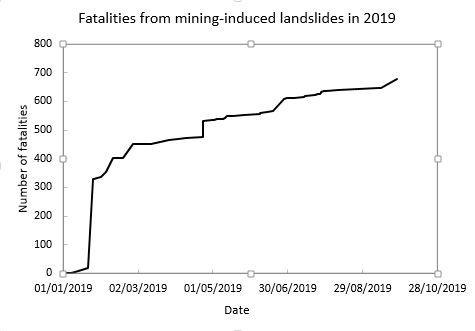27 September 2019
Tibesti – another mining-induced landslide
Posted by Dave Petley
Tibesti – another mining-induced landslide
Reuters reported yesterday that yet another major mining-induced landslide has occurred, this time in the Tibesti region of Chad:-
“A landslide at an illegal gold mine in Chad has killed about 30 people, a government minister said on Thursday. The mine in the Tibesti region near the Libyan border collapsed early on Tuesday and more victims might still be buried in the rubble, defence minister Mahamat Sala told Reuters.”
AGP has a more detailed report, in French. This is an edited Google Translate version of the key parts:-
“The accident occurred in the area of Kouri Bougoudi, near the Libyan border, in the province of Tibesti, which subject to an ongoing emergency. “A mine has collapsed, I can not say exactly how many people are dead, but there are many people working in these mines, there must be a lot of dead, that’s for sure,” said the Chadian Minister of Defense and Security, Mahamat Abali Salah, by phone to AFP.
“An army officer who requested anonymity told AFP “about thirty dead”, but it is based on testimony collected from people on the spot, as the army is not permanently present in this remote area. A member of the region, also based on testimonies collected since N’Djamena, speaks of “a dozen deaths”.”
The area affected is effectively lawless, so the mines are unregulated and thus highly dangerous. This image, from the AGP report, provides an insight into the level of risk associated with this type of mining:-

Mine workings at Tibesti in Chad. Image via AGP.
.
This event continues the deadly toll from mining-induced landslides, which I have highlighted previously. This graph below shows the total number of fatalities from such landslides in 2019 to date – I have recorded 677 deaths in 52 separate landslides so far. This total will inevitably rise in the months ahead:-

The cumulative total number of mining-induced landslides in 2019 to date.
.
The worst event was the Córrego do Feijão tailings dam failure at Brumadinho in Brazil in January, but as the graph shows, there are many other events occurring around the world.


 Dave Petley is the Vice-Chancellor of the University of Hull in the United Kingdom. His blog provides commentary and analysis of landslide events occurring worldwide, including the landslides themselves, latest research, and conferences and meetings.
Dave Petley is the Vice-Chancellor of the University of Hull in the United Kingdom. His blog provides commentary and analysis of landslide events occurring worldwide, including the landslides themselves, latest research, and conferences and meetings.
Las practicas mineras ilegales (no tecnificadas) se salen del control de los estados, se realizan en areas remotas donde el control es de grupos al margen de la ley, la explotación le realizan comunidades vulnerables con muy poca tecnica y el resultado es un alto riesgo en sus actividades. Lamentable.
Hi Dave,
Always interested to read these posts, and saddened by the tragically high numbers of fatalities that continue to plague the sector. I’m interested if, besides Brazil, are all of these other landslides recorded from artisanal mining? I work with an NGO supporting small-scale and artisanal miners to mine more safely, efficiently, and access better markets and formalize. We’re always challenging the norms of large-scale versus small-scale especially in the area of health and safety. Would be interesting to analyze this with some of the data you’ve collected.
What does the term “artisanal mining” mean? It’s new to me.
[https://en.wikipedia.org/wiki/Artisanal_mining An artisanal miner or small-scale miner (ASM) is a subsistence miner who is not officially employed by a mining company, but works independently, mining various minerals or panning for gold using their own resources. Small-scale mining includes enterprises or individuals that employ workers for mining, but generally using manually-intensive methods, working with hand tools. D.]